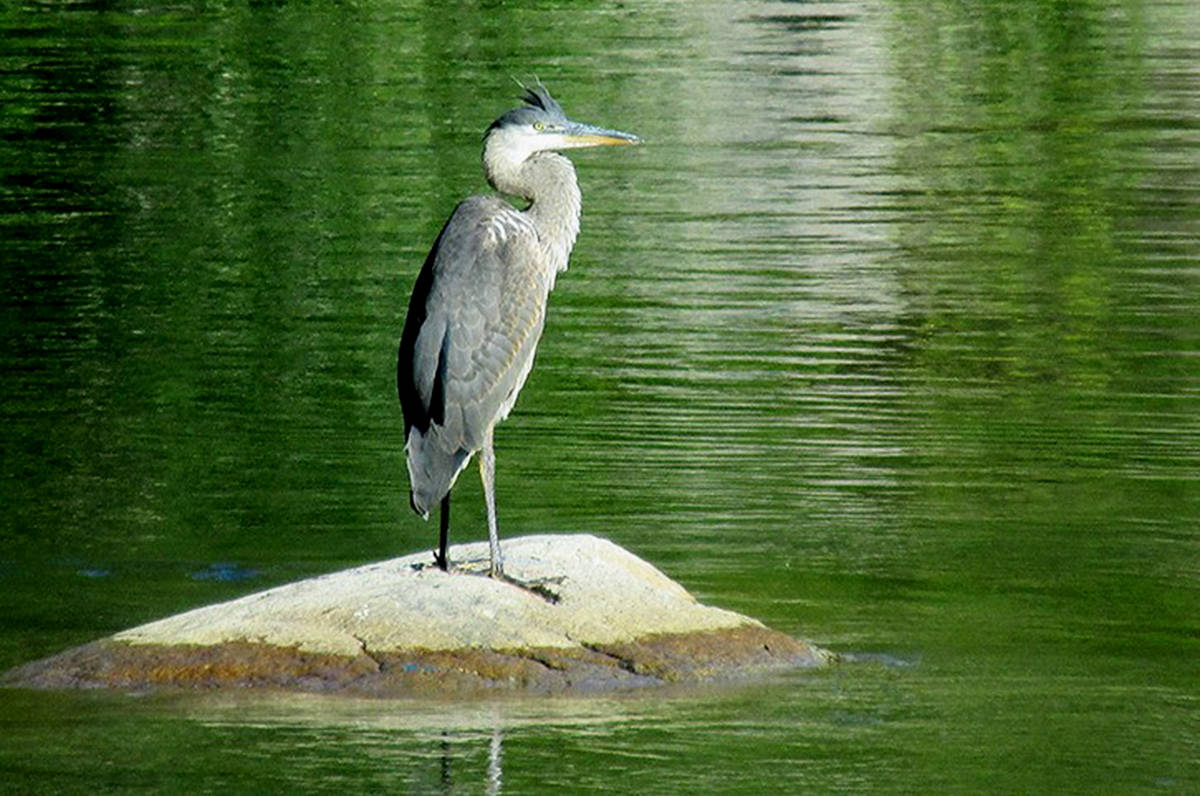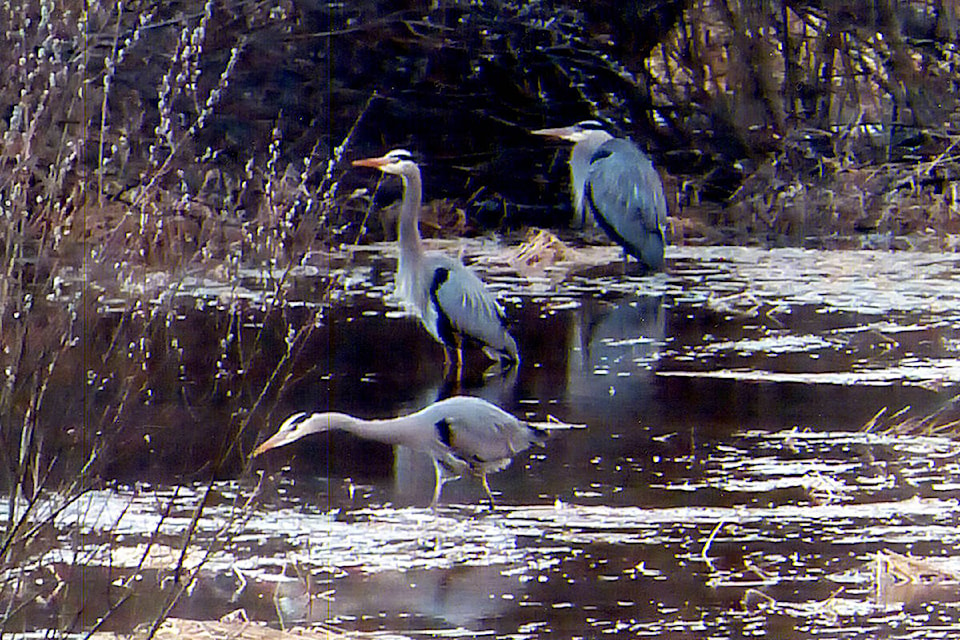Anyone in the Columbia Basin who has seen a great blue heron in the wild can attest to just how thrilling that is.
Blue-grey plumage, stick-like legs for wading, and rhythmic wing beats characterize the regal bird, which is found in riparian ecosytems throughout southern British Columbia.
More than 530 heron sightings in the Columbia Basin were reported by 250+ volunteers as part of a two-year study focused on heron inventory and habitat stewardship.
“This level of public interest and engagement was extremely encouraging and instrumental in finding several new heron breeding and roosting sites in the Columbia Basin,” says Marlene Machmer, the project biologist based in Nelson.
Sadly, that’s where the good news ends.
Already a blue-listed species, meaning populations are sensitive and vulnerable to further decline, the study found that the number of active nests were at a new low at 18 breeding sites in the Basin last year.
“Results are not good news,” Machmer said. “More sites were active in 2017, but 52 per cent of all active nests at 15 active sites failed in 2016.”
Despite expanding the search area and investing more time and effort than ever before, the 2017 results represent the lowest number of active nests, 173, recorded since heron tracking started 15 years ago.
“This is close to half the number of active nests I started off with when monitoring was initiated in 2002,” Machmer explained. “We also have confirmed reports of at least six herons dying near Balfour, Harrop and Pass Creek, since August 2017.”
Of the total 23 breeding sites confirmed during the study, 15 and eight are in the East and West Kootenay respectively.
“They are shown relative to the locations of 50 previously occupied heron breeding sites in the Columbia Basin, documented between 1990 and 2014,” she clarified. “Comparing current breeding sites with historical distributions, it is obvious that some portions of the West Kootenay that used to support small heronries - the corridor from Nelson to Castlegar, Trail, Fruitvale and the Pend D’Oreille - no longer have confirmed activity. Similar trends are apparent in some parts of the East Kootenay.”
Heron breeding numbers and success continue to decline for a variety of reasons, Machmer said.
Hydro-electric dams, forestry operations, various developments, wetland drainage as well as contaminants, are all threats to herons and the quantity and quality of their habitats. Greater human disturbance is a key factor, as is predation, because unlike herons, certain birds thrive in populated areas.
“Developments are encroaching more and more on high value heron habitats while predators, like eagles, ravens and crows, multiply,” she explained. “Habitat loss and degradation, developments, predators and human disturbance all interact synergistically to reduce heron breeding numbers and reproductive success.”
Herons and other stick-nesting and/or fish-eating birds are being increasingly “squeezed”, to the point where competitive disruption is inevitable - even in high-value managed areas like the Creston Valley, and the Columbia Wetlands Wildlife Management Areas.
Herons often abandon breeding sites because of disturbance, especially in the nest-building, egg-laying, and incubation phases.
“We can only do so much to influence all of this,” Machmer said. “Improved awareness is needed regarding how our activities impact herons.”
Examples she mentioned are tree clearing, dog-walking, boating, ORVs and other sports, as well as legacies like developments and their contaminants.
Greater awareness will lead to improved stewardship and every Basin resident can play a part in reducing disturbance and habitat impacts.
Machmer advises common-sense approaches such as avoiding disruptive activities - like tree clearing, construction, road-building, recreation, livestock grazing, drone use, and persistent human/dog presence - within a 300 m radius of active heron breeding sites.
Keeping a distance from herons foraging is important, too.
For further recommendations, information and/or to report heron breeding sites, email mmachmer@netidea.com.
The 2016-2017 heron study was made possible with funding from Columbia Basin Trust and the Fish and Wildlife Compensation Program.

